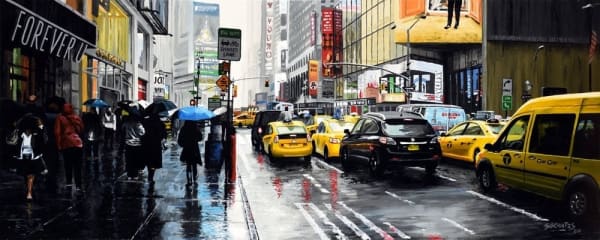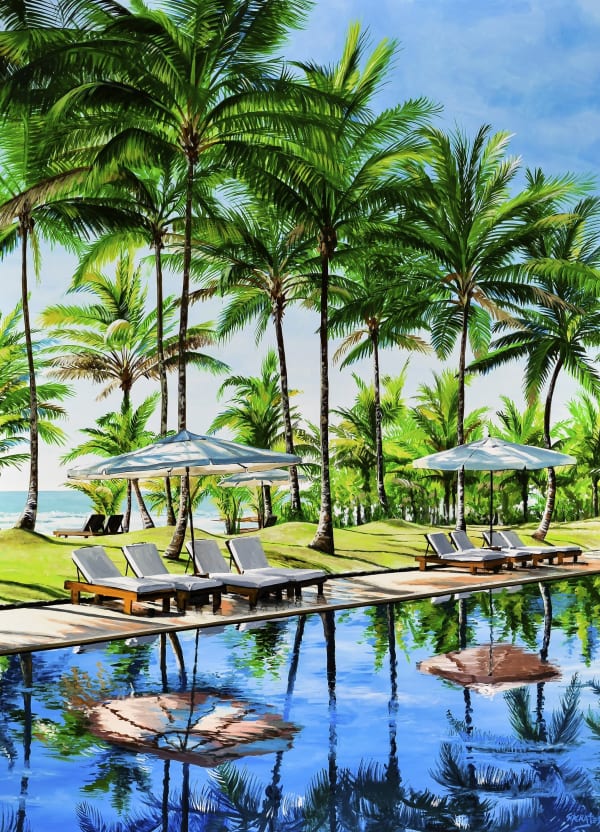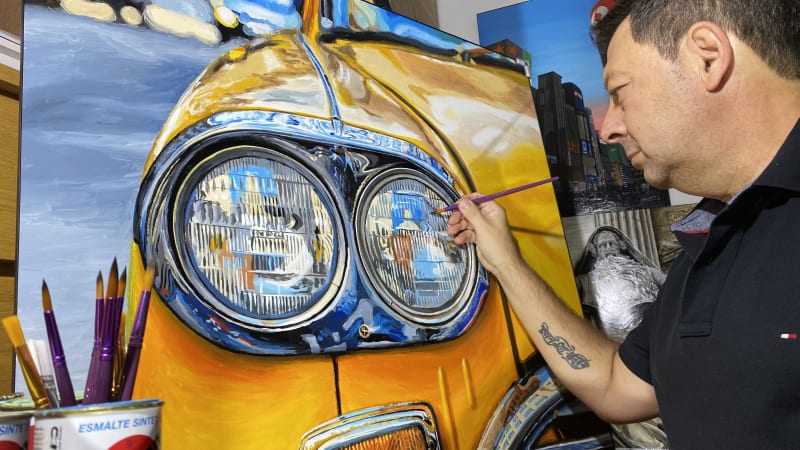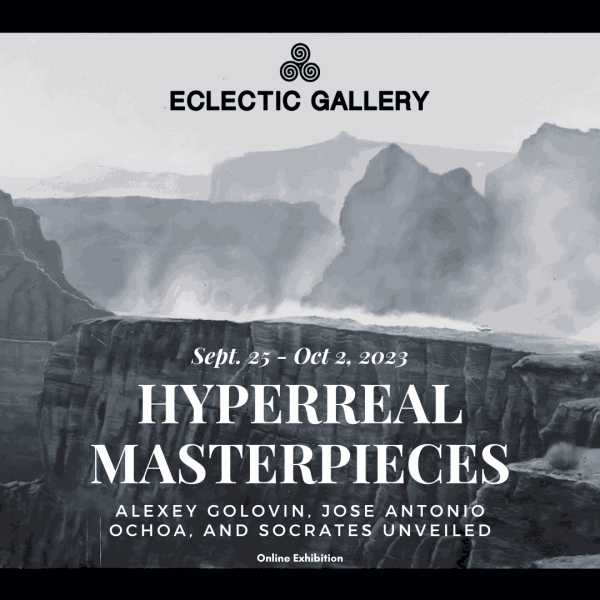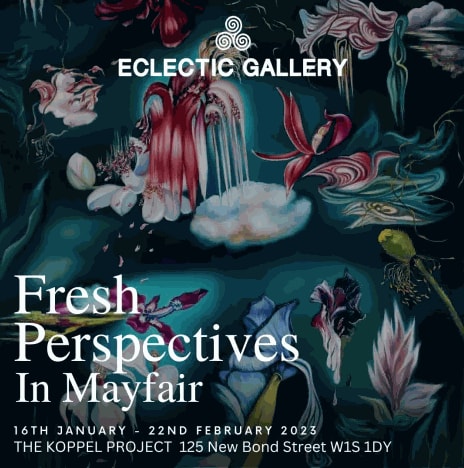Socrates Spain, b. 1966
Spain
Socrates experimented with surrealism throughout the 1980s, employing a range of approaches. At the end of the decade, he found synthetic enamel painting by accident and established new techniques for creating artworks with the medium.
Socrates developed a very personal style as a result of his meticulous study of the impressionist masters and profound contemplation of the most relevant hyperrealist works, constantly focusing on achieving a scene of extraordinarily realistic effect using impressionist techniques and handling. The consequence of this pictorial fusion was a new style of art. “Hyperimpressionism”, as the artist described it.
-

Different Waters
16 Newman Street, Fitzrovia, London W1T 1PB, UK 3 - 24 Apr 2024'Immerse yourself in the serene beauty of 'Such a Different Water', our captivating exhibition featuring breathtaking seascapes and mesmerizing portrayals of bodies of water by renowned artists Juan del Pozo,...Read more -

Serene Splendor: A Virtual Showcase of Tranquil Artistry
Online exhibition 19 - 26 Feb 2024Step into a realm of tranquility with our latest virtual exhibition, where soothing hues and serene compositions await. Immerse yourself in a curated collection of artworks designed to evoke calmness...Read more -

Wanderlust Wonder: An Enchanting Locations in Art
Online exhibition 12 - 15 Feb 2024Embark on a virtual journey of wanderlust with Eclectic Gallery's captivating online exhibition featuring a mesmerizing array of paintings showcasing enchanting locations from around the globe. From ancient ruins to...Read more -

Aqueous Perspectives: A Symphony of Water
Online exhibition 22 - 29 Jan 2024Dive into the mesmerizing world of 'Aqueous Perspectives,' Eclectic Gallery's latest exhibition that celebrates the timeless beauty of water through a diverse collection of art. Immerse yourself in a symphony...Read more
-

Shades of Azure: A Virtual Gallery of Blue Inspirations
Online Exhibition 19 Dec 2023 - 14 Jan 2024Dive into the mesmerizing world of 'Shades of Azure,' our online exhibition featuring a captivating array of paintings and sculptures by talented artists, each exploring the boundless depths of the...Read more -

Hyperreal Masterpieces: Alexey Golovin, Jose Antonio Ochoa, and Socrates Unveiled
Online Exhibition 25 Sep - 2 Oct 2023Step into a world where art blurs the lines between reality and canvas. Explore the captivating realm of hyperrealism with the extraordinary works of Alexey Golovin, Jose Antonio Ochoa, and...Read more -

Urban Landscapes and Interior Enigmas: A Dual Exhibition by Juan del Pozo and Socrates
Online Exhibition 28 May - 3 Jun 2023Embark on a captivating virtual journey through the digital halls of Eclectic Gallery's online exhibition, where the extraordinary talents of Juan del Pozo and Socrates converge in a stunning display of artistic brilliance.Read more
Explore the captivating world of Juan del Pozo, an artist whose creations radiate with the vibrant energy of summer. Delve into his collection of richly textured oil paintings that transport you to sun-kissed landscapes, where warm hues and immersive details bring scenes to life. From majestic seascapes to picturesque countryside vistas, del Pozo's art captures the essence of the season, inviting you to bask in its beauty.
Venture further into the online exhibition and encounter the mesmerizing artworks of Socrates, a gifted artist known for his remarkable ability to bring cities and interiors to life on canvas. With unparalleled skill and attention to detail, Socrates creates stunningly realistic paintings that transport viewers into bustling urban landscapes and enchanting interior spaces. Every stroke of his brush captures the essence of these settings, from the architectural grandeur of cityscapes to the intricate nuances of interior design. Prepare to be awestruck by Socrates' masterful renditions, as he invites you to explore and appreciate the beauty found within these captivating realms.
Immerse yourself in this online gallery experience, where the talents of Juan del Pozo and Socrates converge to offer a diverse and captivating showcase of artistic mastery. From the comfort of your own screen, you can engage with their works, allowing their creative voices to resonate within your soul. Take this unique opportunity to delve into the depths of their artistry, as they transport you to worlds where imagination knows no bounds.
Whether you're an art enthusiast, a collector, or simply seeking inspiration, this online exhibition presents an exquisite opportunity to immerse yourself in the boundless creativity of these two exceptional artists. So step into the virtual gallery space, navigate through their awe-inspiring portfolios, and let the transformative power of their art awaken your senses and ignite your imagination. -

Curated Eclecticism
Pop-up Exhibition at OXO 22 May - 12 Jun 2023Step into a captivating world of artistic brilliance and immerse yourself in the vibrant colours and creative energy of the pop-up exhibition hosted by Eclectic Gallery. Nestled beside the picturesque River Thames, this enchanting summer-themed showcase promises to transport you to a realm where imagination knows no bounds.Read more
As you enter the exhibition space, a warm breeze carries the whispers of the nearby river, enhancing the ambience and setting the stage for a truly unforgettable experience. The gallery, adorned with elegant drapes and adorned with lush greenery, evokes a sense of tranquility that complements the sunny season.
The walls come alive with a mesmerising display of artworks, carefully curated from the talented artists featured on Eclectic Gallery's website. Each piece carries its own unique story, inviting you to embark on a visual journey that celebrates the wonders of summer. From sun-kissed landscapes to vibrant floral compositions, the collection showcases a diverse range of styles and techniques, ensuring there is something to captivate every art enthusiast.
Roaming through the exhibition, you'll encounter exquisite oil paintings that capture the golden hues of a summer sunset, evoking feelings of warmth and nostalgia. Delicate watercolour masterpieces transport you to idyllic gardens bursting with blooming flowers, where nature's beauty takes centre stage. Mixed media artworks showcase the fusion of creativity and innovation, combining textures, colours, and elements in unexpected ways, adding an extra layer of intrigue to the display.
Eclectic Gallery's dedication to showcasing emerging talent shines through in this summer-themed exhibition, as you discover the works of both established artists and rising stars. The event serves as a platform to celebrate the diversity and depth of artistic expression, inviting dialogue and fostering connections within the art community.
As the sun casts a gentle glow through the gallery windows, casting delicate shadows on the artwork, you'll feel a renewed sense of appreciation for the beauty that surrounds us. Whether you are an avid art collector, an enthusiast, or simply seeking a respite from the bustling city, the Eclectic Gallery's pop-up exhibition is a must-visit destination this summer. Prepare to be captivated, inspired, and transported to a world where art and nature intertwine, all within the embrace of the riverside ambiance.
-

Urban Serenity
16 Newman Street, London, W1T 1PB 21 Feb - 14 Mar 2023Read more -

Fresh Perspectives in Mayfair
125 New Bond Street, London W1S 1DY 16 Jan - 22 Feb 2023Eclectic Gallery is very pleased to present our Pop-Up Exhibition “Fresh Perspectives in Mayfair“ , from the 16th of January to the 22nd of February 2023 at 125 New Bond...Read more -

Black Friday exhibition
16 Newman Street 22 - 30 Nov 2022Read more -

Environmental Beauty
16 Newman Street, Fitzrovia, W1T 1PB, London 28 Apr - 14 May 2022Read more

